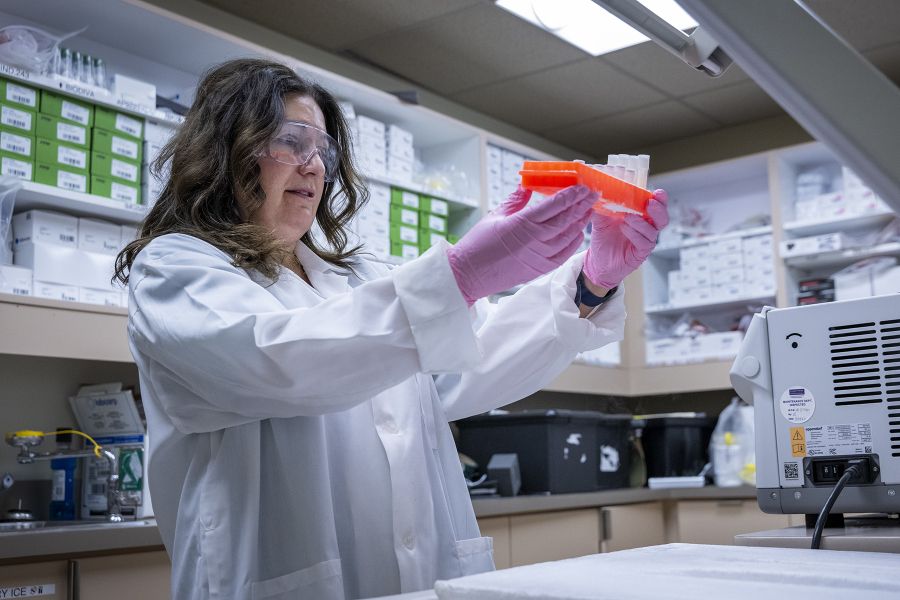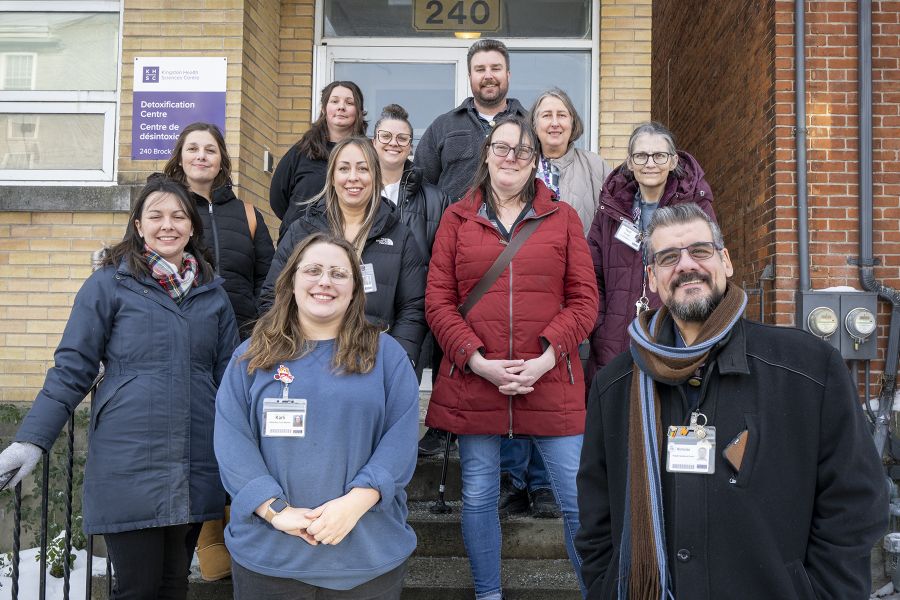Effective immediately masking is required for everyone when present on all inpatient units, in the Emergency Department (ED), the Urgent Care Centre (UCC), and the Children’s Outpatient Centre (COPC).

Thanks to a partnership between Kingston Health Sciences Centre (KHSC) and its Frontenac, Lennox and Addington (FLA) Ontario Health Team (OHT) partners in primary care, community paramedicine, and home and community care, people with congestive heart failure (CHF) are one of the groups benefitting from improved coordination among health-care providers – now receiving specialized care up to 53 per cent faster.
Finding better ways to work together and sharing knowledge have contributed significantly to improving KHSC’s Heart Function Clinic’s ability to see more patients sooner.
With funding from Ontario Health and the Southeastern Ontario Academic Medical Organization (SEAMO), clinic staff have trained 17 Ontario Health atHome nurses, 12 community paramedics, three KHSC care transition nurses, and 65 primary-care doctors to better coordinate and deliver care for patients as their needs change and they transition from different levels of care throughout their health-care journey.
Training is a key component of the FLA OHT’s integrated care pathways, which are step-by-step plans that connect various providers delivering care for people with chronic diseases.
“Hospital care should be the last resource,” says Dr. Aws Almufleh, the KHSC physician lead of the Heart Function Clinic and specialist lead of the CHF integrated care pathway. “That’s why education and outlining when and how health-care partners can access each other’s services are crucial to helping improve people’s access to care where and when they need it.”
It’s no secret, emergency departments (EDs) are not designed to manage chronic illnesses, and yet, CHF and chronic obstructive pulmonary disease (COPD) are responsible for more than 2000 ED visits in the FLA counties annually. These two conditions also result in more than 1000 hospital admissions per year in the region.
One of the first things the FLA OHT partnership identified as a critical gap in ensuring the wellbeing of individuals living with CHF and COPD was access to primary care.
“Primary care—with its focus on continuity, prevention and complexity—can help solve some of health care’s toughest challenges: reducing wait times, lowering costs and delivering equitable care,” explains Dr. Ani Garg, a family doctor at Kingston Community Health Centres, who also provides leadership to the FLA OHT’s COPD integrated care pathways.
Through ED reviews, patients without a family doctor who are at risk of returning to an ED or getting admitted to the hospital are being matched with Dr. Garg. He has committed to accepting 100 high-risk individuals into his practice and has already connected around 50 patients.
Additional ways in which the integrated care pathways are making it easier for people to receive consistent, proactive management of their conditions include:
- Community health-care providers are supported by the Heart Function Clinic in their clinical decision-making through a direct telephone line to the clinic’s nurse practitioners and e-consultations that respond within 24 hours.
- Spirometry, a test that measures how quickly and how much air someone can breathe in and out of their lungs, is now available in more locations and has helped increase COPD diagnoses by four per cent and enabled appropriate follow-up care for patients.
- Remote patient monitoring, provided by community paramedics and Ontario Health atHome nurses, identifies when someone’s condition is worsening, allowing action to be taken before an emergency occurs.
- In-person clinic assessments for people meeting urgent criteria occur within two weeks and many take place within one week.
- Primary-care providers can book echocardiograms, an ultrasound to test the heart’s structure and function, within two weeks, which leads to quicker diagnosis and treatment for people needing urgent care.
- Community paramedics are equipped to administer home intravenous (IV) diuretic therapy to help manage heart failure at home by relieving fluid build-up, and as a result, avoiding hospitalizations.
It has been over a year since the integrated care pathways launched to support people to live healthier lives with more preventive, integrated care. So far, success has been steady. Hospital admissions have decreased for COPD by 18 per cent and for CHF by 21 per cent. ED visits are also down by three per cent and 18 per cent, respectively.
Hospital-visit data, health outcomes and community member feedback are contributing to the ongoing evaluation of the health-care system changes being made to help keep the over 18,000 people living in Kingston and surrounding areas with CHF and COPD healthier, for longer and with a better quality of life.
What partners are saying:
"Having extra training and capabilities for assessing heart failure symptoms is one important way community paramedics serve our clients in their homes," says Dave Doran, community paramedic, Frontenac Paramedics. "It equips us to be eyes and ears for physicians and nurse practitioners, and that helps to preserve emergency medical capacity for those who need it most."
“Tele-homecare nursing empowers patients to manage their illness confidently and independently at home, while providing ongoing support,” says Lindsay Hudson, Ontario Health atHome nurse. “By helping patients make informed health decisions, we aim to reduce reliance on emergency and hospital services and offer peace of mind—knowing a nurse is just a phone call away.”
“This is a very exciting development in care,” says Dr. Michael Fitzpatrick, KHSC’s Chief of Staff and executive vice-president of Medical & Academic Affairs. “It uses a cost-efficient, multidisciplinary team approach to provide evidence-based best care to patients with chronic disease and is a model that could be extended to include other chronic diseases over time.” Dr. Fitzpatrick leads the ICP initiative from KHSC’s perspective, along with Dr. Kim Morrison, family physician and executive lead for the Frontenac, Lennox & Addington Ontario Health Team (FLA-OHT), who leads it from the community perspective. As the respirologist lead for the COPD integrated care pathway, Dr. Fitzpatrick also works closely with Dr. Garg.
“The whole point [of the integrated care pathways] is coming together to provide care for patients when they need it and where they need it,” says Dr. Almufleh, who works closely with Reddendale Medical Clinic family doctor Kevin Loughlin, the primary-care lead for the heart failure integrated care pathway. “Collaborating with our community partners has been incredibly rewarding.”



